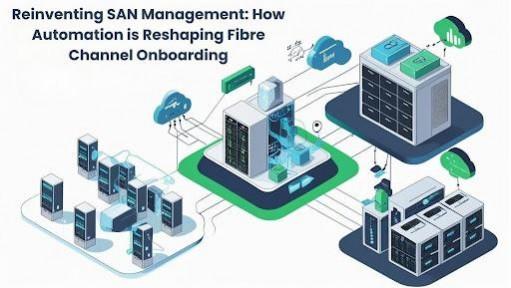
In his recent publication, technologist and expert Derek Asir Muthurajan Caleb introduces an innovative solution to a longstanding pain point in enterprise infrastructure: the cumbersome onboarding of Fibre Channel (FC) devices in Storage Area Networks (SANs). With an academic background and professional experience rooted in secure systems.
From Bottleneck to Breakthrough
Traditionally, FC device onboarding has involved a string of manual steps from assigning IP addresses to configuring security policies, each demanding the attention of IT staff and often resulting in delays. These processes not only slow infrastructure scaling but also open doors to misconfigurations and security loopholes. Derek's research identifies how these inefficiencies translate into broader business delays, particularly in industries like healthcare, finance, and e-commerce where infrastructure agility is critical.
Security Reimagined with FIDO
Originally developed to eliminate passwords in consumer authentication, the FIDO protocol is repurposed in this framework to authenticate devices during onboarding. Its public-key cryptography ensures that each device presents a verifiable identity without ever sharing secrets, a critical advancement for SAN environments where a single compromised credential can expose sensitive data.The proposal introduces the concept of an attestation module, which offers proof of identity and integrity from the first moment a device connects.
The Zero-Touch Provisioning Model
At the core of this transformation is the Zero-Touch Provisioning (ZTP) architecture. Built on four components: connectivity, authentication, configuration repositories, and orchestration, this model orchestrates the automatic detection and secure onboarding of FC devices. Inspired by frameworks like Intel's FIDO Device Onboard (FDO), the proposed architecture enables onboarding through steps such as ownership transfer and policy enforcement, all without human intervention. The orchestration layer ensures consistent deployment across fabric networks, preserving system integrity even in complex, multi-device configurations..
Smart Authentication for Smarter Infrastructure
The implementation emphasizes cryptographically verifiable authentication flows and certificate-based security. These eliminate the need for shared secrets and default passwords, a common vulnerability in legacy systems. Instead, each FC device is issued a unique digital certificate, verifiable through public key infrastructure and aligned with broader enterprise security standards.
By leveraging structured authentication zones within SANs spanning both management planes and data paths the framework builds a trusted perimeter that inhibits lateral attacks and prevents configuration drift.
Automation with Governance in Mind
Derek's blueprint doesn't merely automate tasks; it incorporates robust governance protocols. The system includes compliance validation, audit logging, and exception handling workflows to ensure that automation doesn't sacrifice oversight. Operational policies are embedded within the automation itself, enforcing zoning rules, LUN masking, and configuration baselines while retaining full traceability. To ensure consistency, a state-based configuration mechanism continuously compares real-time system states with desired configurations.
AI and the Future of Infrastructure Automation
Looking forward, the paper explores integrating AI into this automated pipeline. Supervised learning models could analyze historical configuration data, identifying risks and optimization opportunities invisible to human administrators. The structured data generated by FIDO-based onboarding provides a natural foundation for training such models, gradually evolving toward more intelligent, context-aware automation.
Frameworks for Sustainable Innovation
Derek's model emphasizes standardized implementation methods that marry technical rigor with organizational adaptability. By aligning onboarding processes with cybersecurity frameworks covering identification, protection, detection, response, and recovery the approach ensures resilience at every lifecycle stage. Structured methodologies, training programs, and clear separation of duties reinforce the shift from manual tasks to oversight and governance.
In conclusion, by adapting the FIDO protocol to automate FC device onboarding, Derek Asir Muthurajan Caleb has laid out a compelling path forward for enterprise SAN environments. His work demonstrates that automation, when thoughtfully implemented, can not only reduce operational friction but also raise the bar for security and agility. As organizations face the growing complexity of hybrid and distributed infrastructure, this methodology offers a scalable solution tailored for the future.









